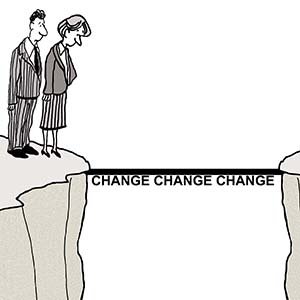What Comes First? The Policy or the Change?

Updating or introducing new policies can be an important driver of change. However, we often experience a long and arduous process as we vet the evidence, consider the impact of change, write the policy and move it through our systems to final approval. Before we’re done, we need to confirm buy-in from many stakeholders, all at various levels with different responsibilities and fluctuating priorities. Because of this, creating and implementing policy can be challenging and can often take months or years to finalize.
And what happens if this process impedes or delays the provision of higher quality, evidence-based care, such as new infant safety recommendations or a proposal for improved epilepsy diagnosis? In other words, what happens if policy becomes a barrier to change rather than a core driver?
Quality improvement doesn’t have to wait for policy. There are important changes that not only can, but should be made while awaiting a standardized policy.
As NICHQ Quality Improvement Advisor Sue Butts-Dion explains, “Having a policy is an important way to standardize practice and can drive some change just by existing. However, testing changes to improve the system doesn’t need to begin with or wait for a policy. In fact, when people have the chance to test out pieces of the plan before it becomes a permanent policy, there is a higher likelihood that people will buy-in to the final product. In the improvement world, some call this ‘learning our way to implementation’ or, in this case, learning our way to the new policy.”
When we do this, we capitalize on a strategy that is:
- Agile: Once a policy is set in place, it can be difficult to reverse or adjust. By testing change strategies first, we can adapt and customize to different circumstances, settings or unforeseen barriers so that the final policy is translatable, relevant and comprehensive.
- Data driven: Testing first ensures a road tested final policy. Proof of success drives positive change and encourages buy-in from more participants.
- Proactive: Once we have evidence, we can begin to test a practice, measure change and build towards a formal protocol. We can drive change before the policy is in place.
Despite the importance of learning our way to a policy, organizations are very policy-based and are hesitant to make change before a policy is in place. “In a recent project, participant perspectives revealed that most believed change relied on putting a policy in place first,” says Butts-Dion. “While policy does contribute to change, I think we can do a better job of explaining why testing matters and outlining what steps to take before a policy exists.”
To address this discrepancy, NICHQ Senior Director Jennifer Ustianov, MS, BSN, RN, IBCLC, identified several essential tips for initiating a culture of change before the policy is in place.
First is to recognize that a policy-based environment can feel forced; instead we need to develop a culture that anticipates and welcomes change by creating a learning environment where evidence-based care is translated, through implementation testing, to optimal care. “When we identify and prioritize evidence-based strategies, we support a learning environment that always seeks the very best care. In response, evidence, rather than rules, drives policy,” says Ustianov.
Support this strategy by finding your champions. These are the stakeholders who believe in evidence-based practice and want to improve outcomes by testing change. Each champion will share results and progress with his or her own network of peers, encouraging an environment of continuous learning and improvement.
Finally, advises Ustianov, change efforts need to prioritize quality improvement (QI) science. QI methods, like PDSA cycles, validate the process of testing change on a small scale, offer an opportunity for staff and patient input and encourage buy-in, all while providing concrete steps for applying the strategy to a broader group or population.
Together, these tactics can help create a culture of change where policy is an outcome of shared learning and proven testing. And importantly, this culture ensures that you remain open and flexible once a policy is in place, allowing for continued refinement and improvement as new evidence becomes available.
Interested in finding out more about QI methods? Take our course, Quality Improvement 101 to get started!
